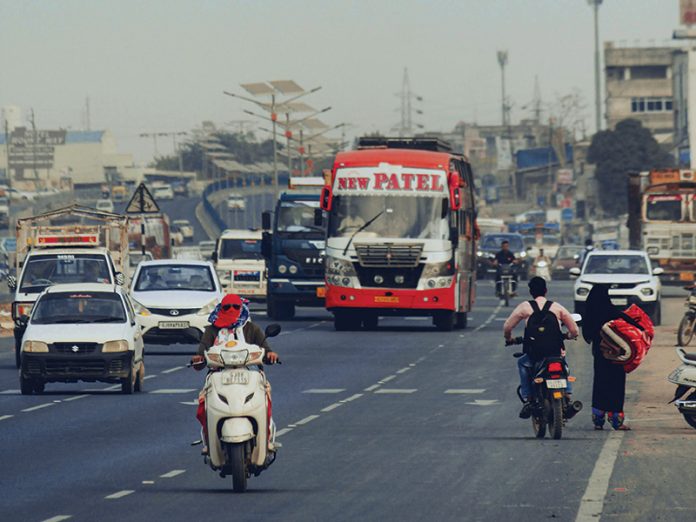By Ziyang Lou & Michael Palocz-Andresen
Ultrafine soot particles and NOx are known to be extremely harmful to human health. The concentration of these pollutants is very high in many large cities of the world. It weakens the body and makes it easier for the virus to penetrate human cells. Reducing pollutant emissions in metropolitan regions worldwide is urgently necessary in order to avoid future infections and pandemics.
Theoretical Introduction to the Role of Ultrafine Soot Particles in Cities
In the big cities, the primary volatile hydrocarbons, which are considered to be the precursors of ultrafine soot particles, come mainly from heavy-duty vehicles (see figure 1).
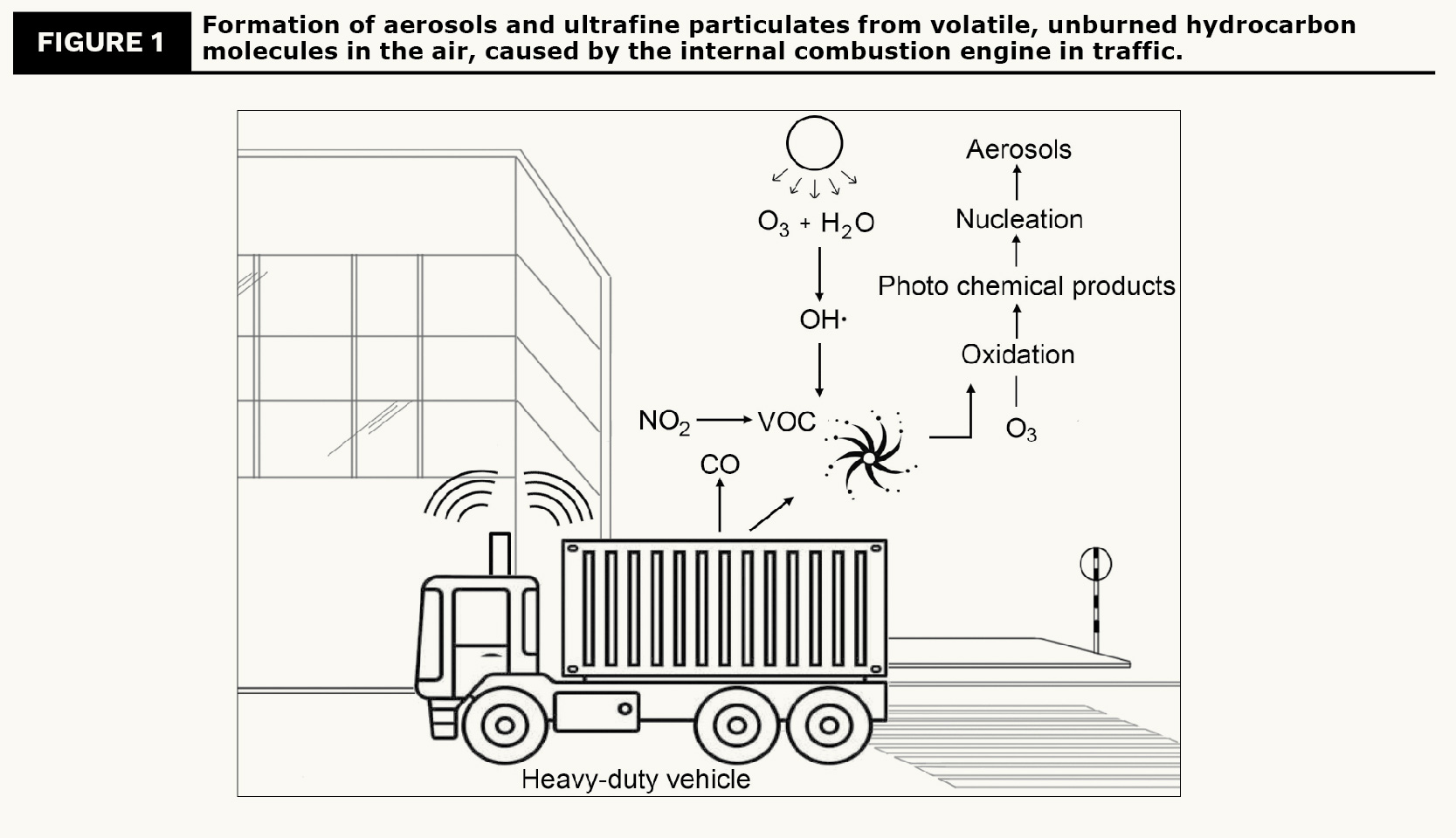
Table 1 summarises the most important mechanisms and properties of fine dust1.
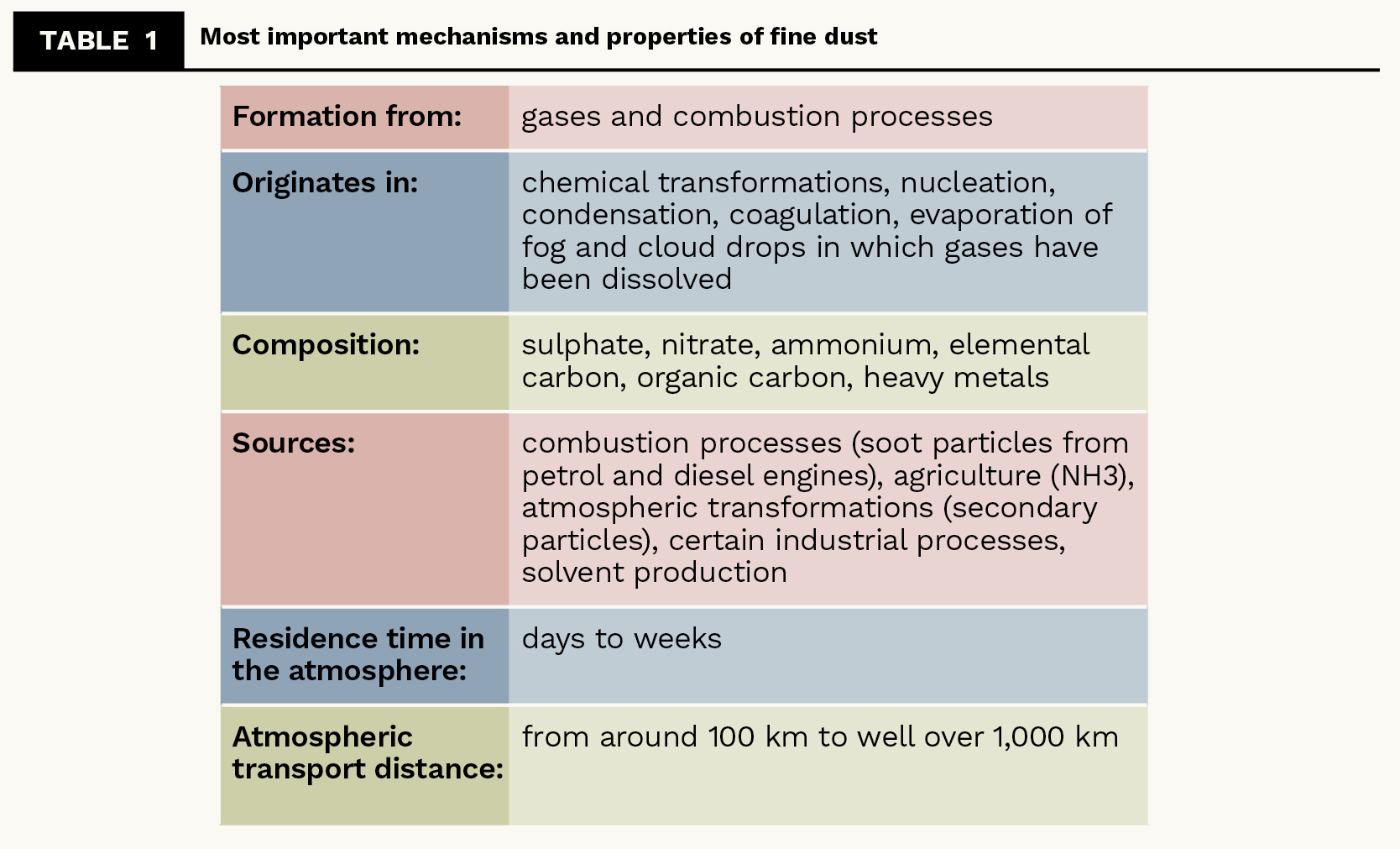
The larger particles fall to earth relatively quickly. However, they are usually whirled up from the asphalt surface by motor vehicles driving on the road.
Smog from Ultrafine Soot Particles
From an aerodynamic point of view, the coronavirus belongs to the category of ultrafine dust. Figure 2 shows the most important components, the order of magnitude, and the cycle of ultrafine dust particles and of the coronavirus2.

Ultrafine dust particles can float in the air for a very long time and can be carried far by the wind. The blurry image of large cities with a high concentration of airborne dust is known as evidence (see figure 3).
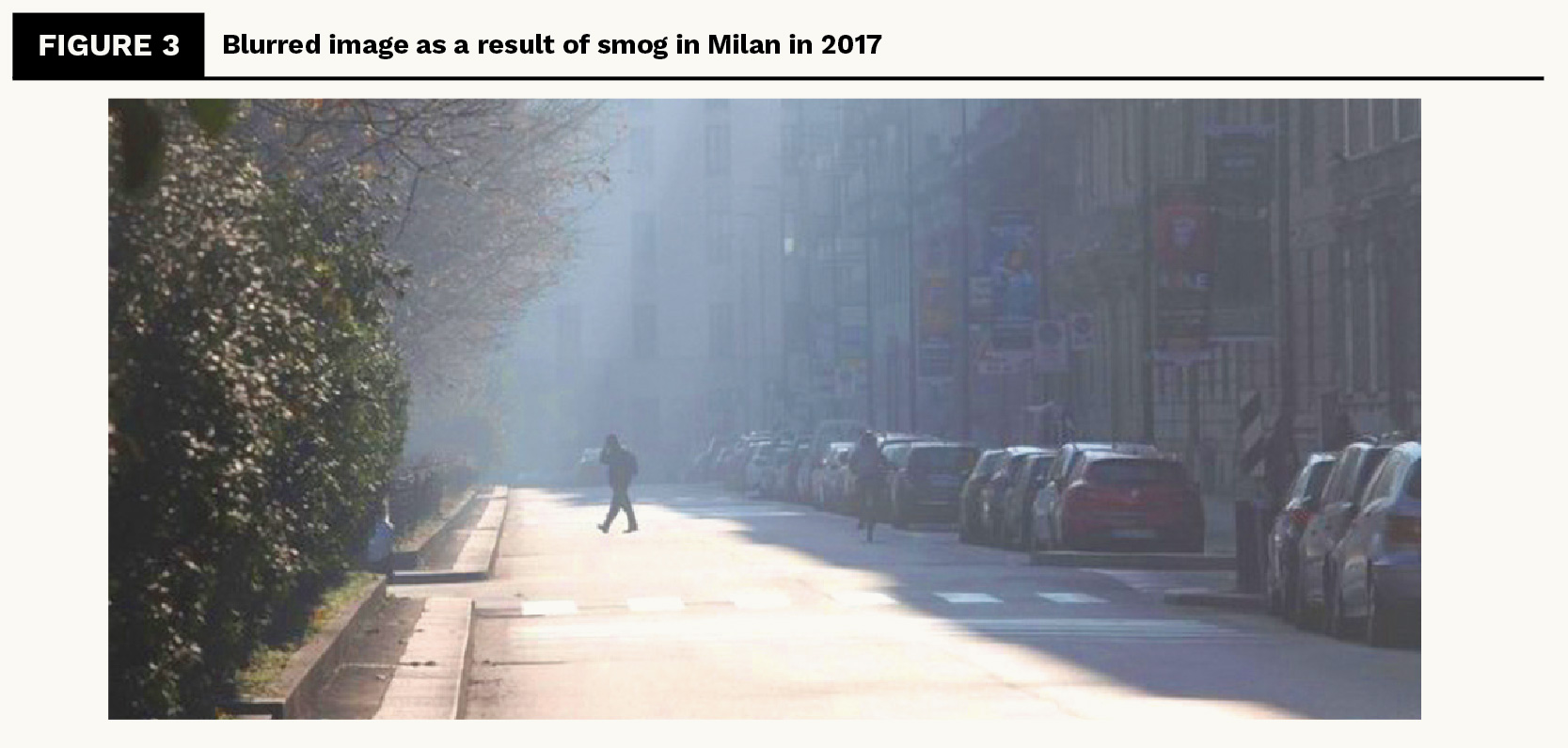
Ultrafine soot particles are smaller than the virus. They usually have an amorphous shape (see the middle image in figure 4)3.
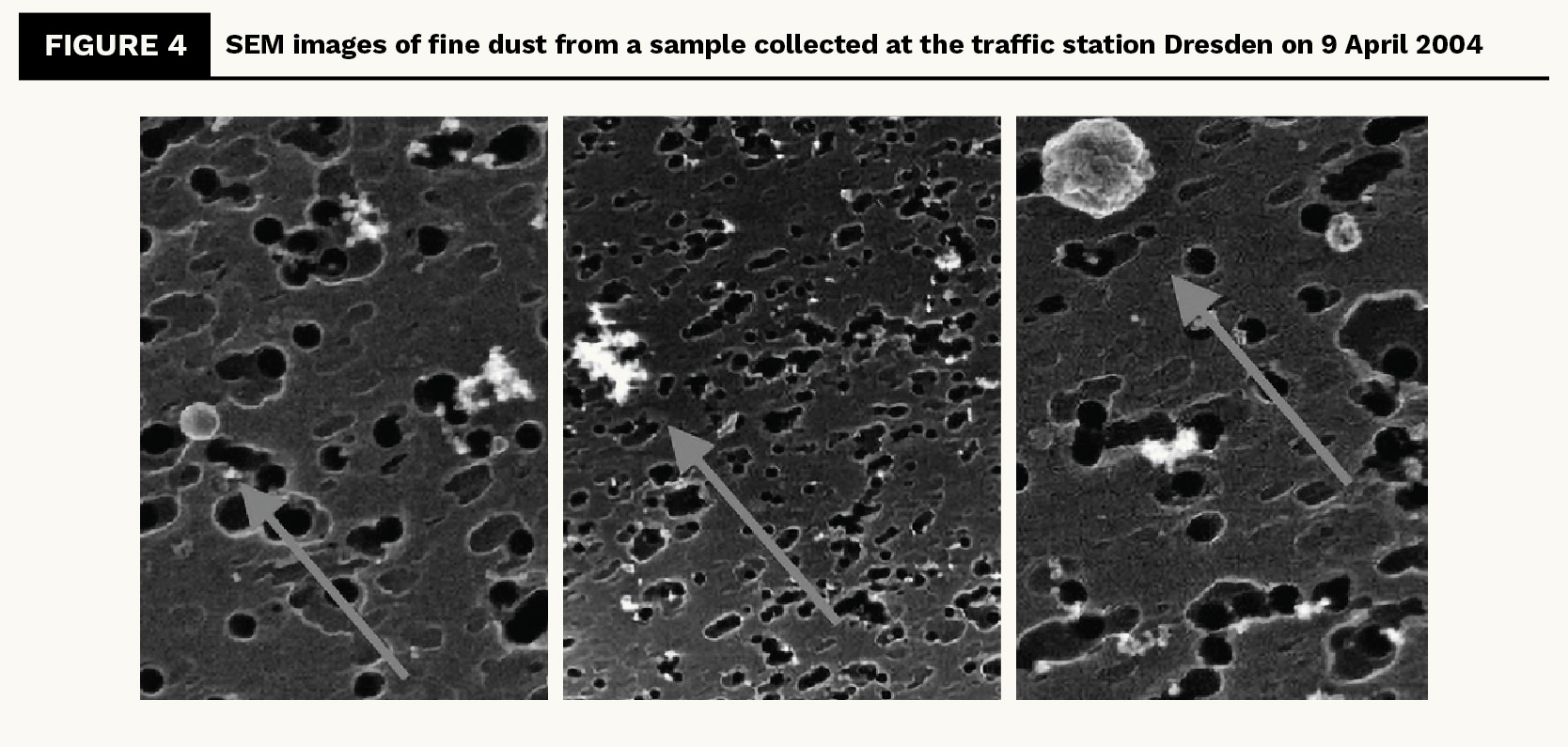
The core pores of the filter can be seen as dark dots in the images. The ultrafine particles are lighter than the background. There are three main categories of particles in the pictures:
- a) Spherical shape – often oxides from high-temperature processes
- b) Grape-shaped form – mostly primary particles of soot
- c) Spherical agglomerates – mostly aged soot or mixed particles.
Ultrafine particles make up only about 1 per cent of the mass, but 80 per cent of the surface of airborne particles. They can adsorb a considerable amount of volatile organic gases (VOC) and other compounds from the precursors for secondary organic aerosols (SOA) and transport them into the human organism4.
Ultrafine particles generally tend to form conglomerates5. It may be that the coronavirus, like all fine dust particles, adsorbs ultrafine soot particles. The crown may even be able to hold a large number of soot particles. The size of the conglomerate mainly depends on the humidity of the air (see figure 5).
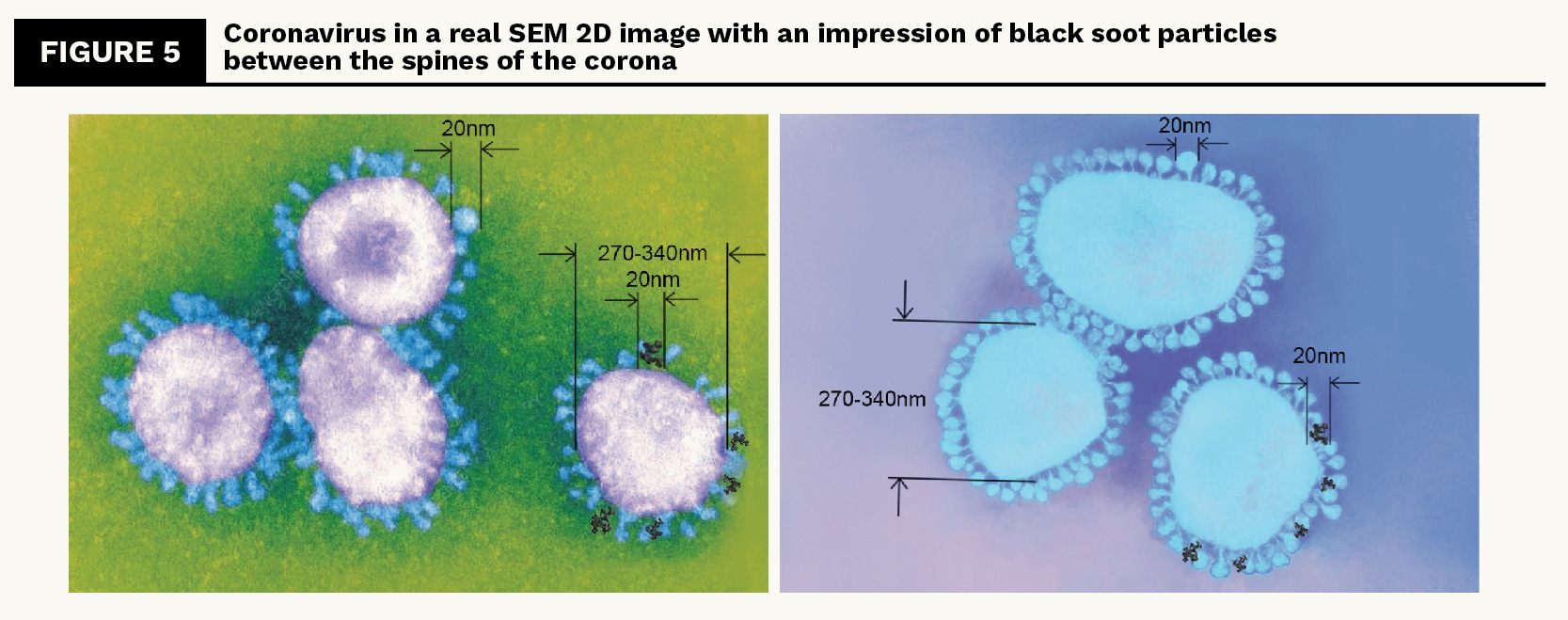
Ultra-small soot particles sometimes carry heavily toxic and carcinogenic substances that are deposited in the human respiratory system.
The aim of this development work is to ensure that especially heavy-duty vehicles emit significantly fewer pollutants in future.
Analysing the Relationship Between the Emission of Ultrafine Soot Particles and the Danger of Coronavirus
The pandemics caused an enormously spreading infection in large cities such as Mexico City, New York, Hamburg, Madrid, and Milan in March and April (see figure 6)6-14.
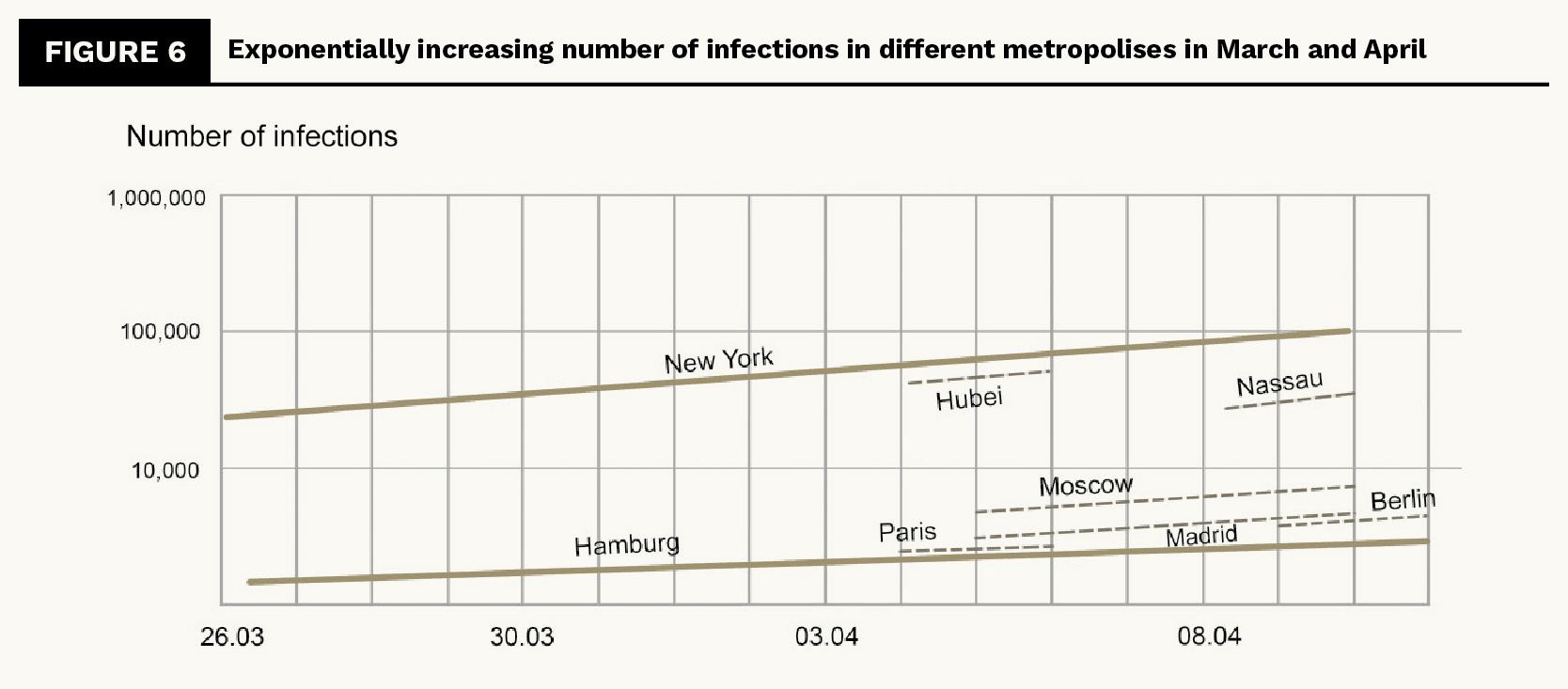
With the introduction of curfews and contact restrictions, the number of infections decreased significantly in many cities around the world. The reduction in air pollution reflects the same decreasing tendency as the reduction in infection rates15 (see figure 7).
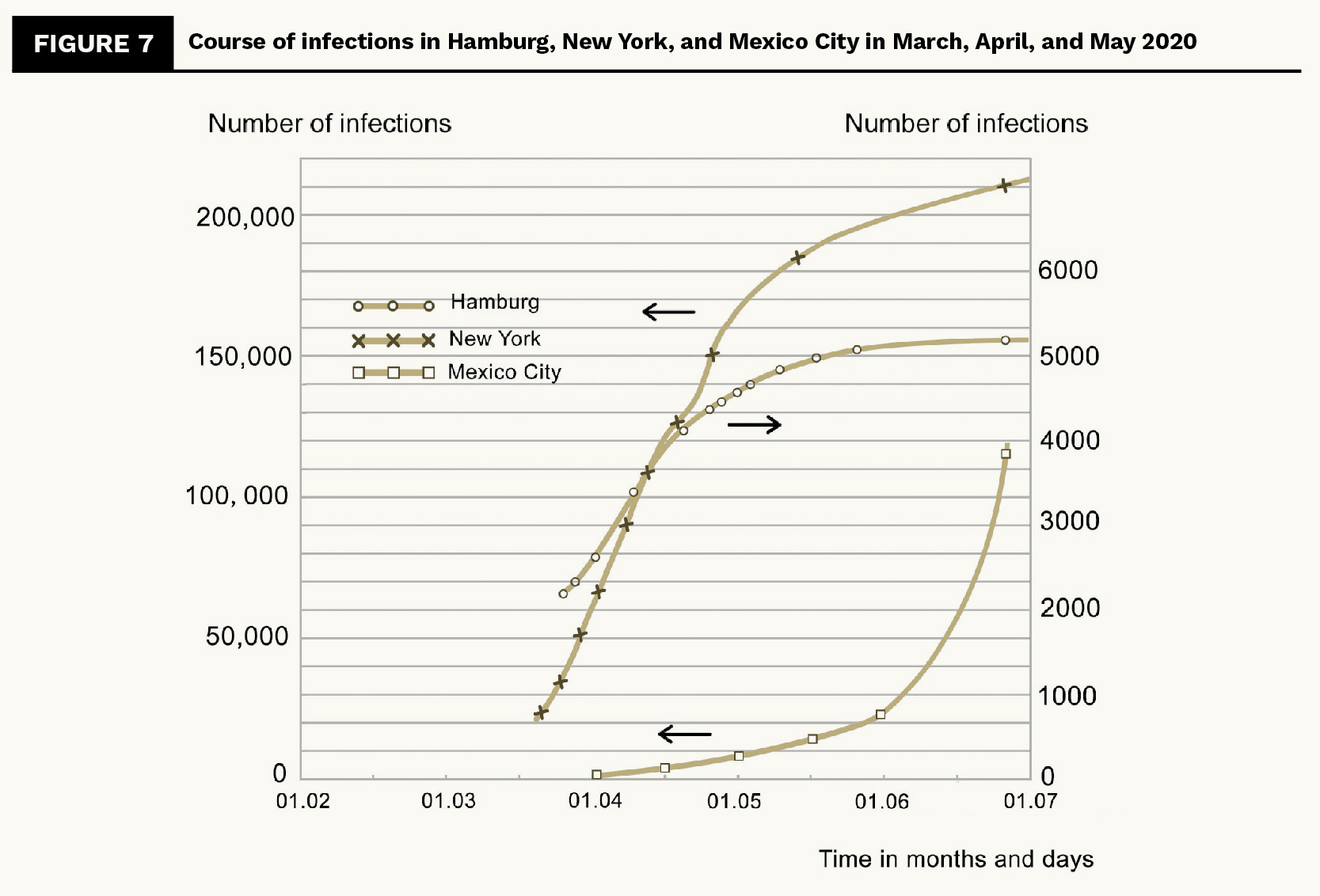
As a result of the restrictions and the decreasing tendency of transportation intensity in cities, there was an exponential decrease the concentration level of NO2 and PM2.5 (see figure 8).
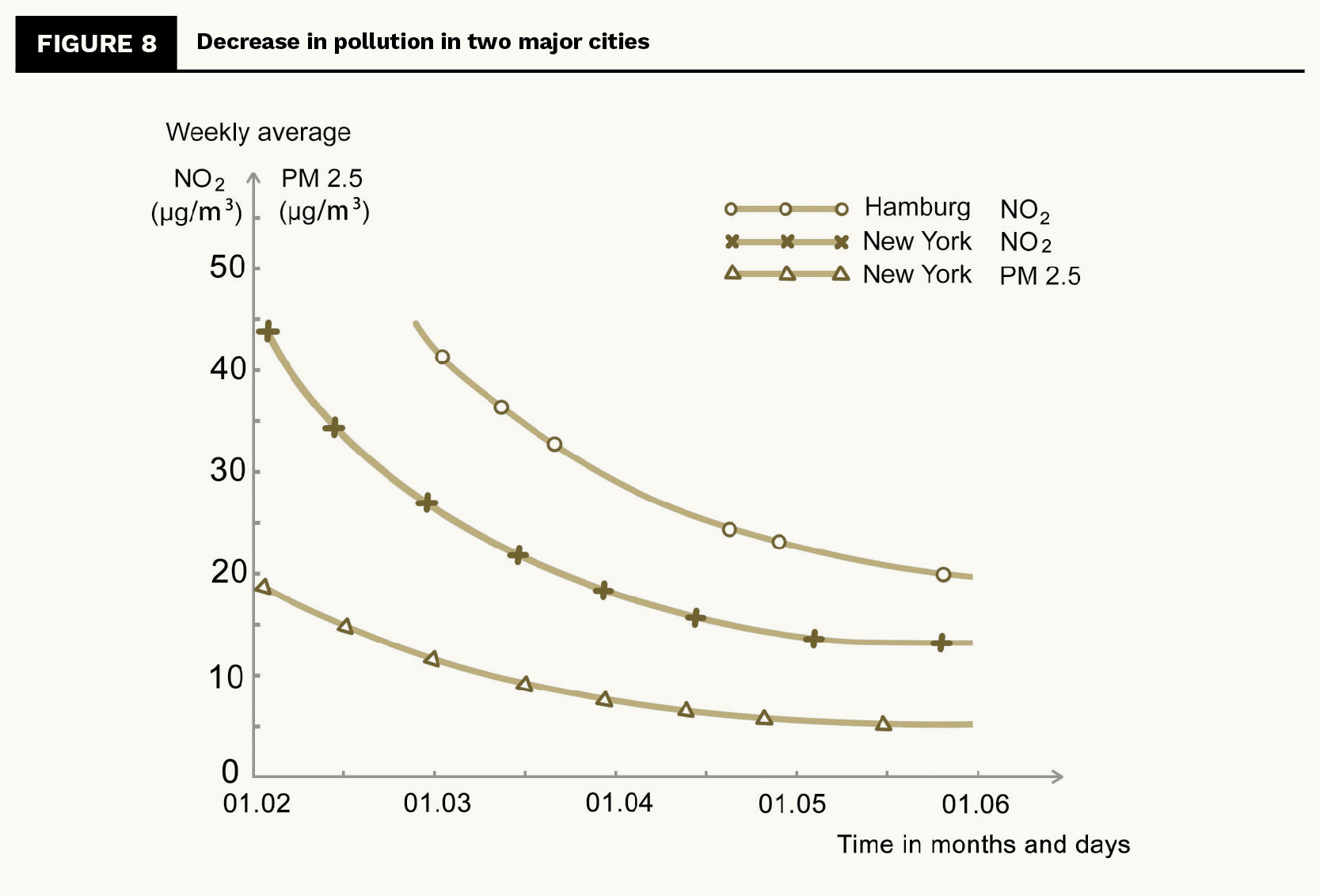
Mexico City’s pollution level is much higher and the downward trend is not as pronounced as in the two other cities. Air pollution in Mexico City, Hamburg, and New York on 31 May 2020 is shown in figure 9.
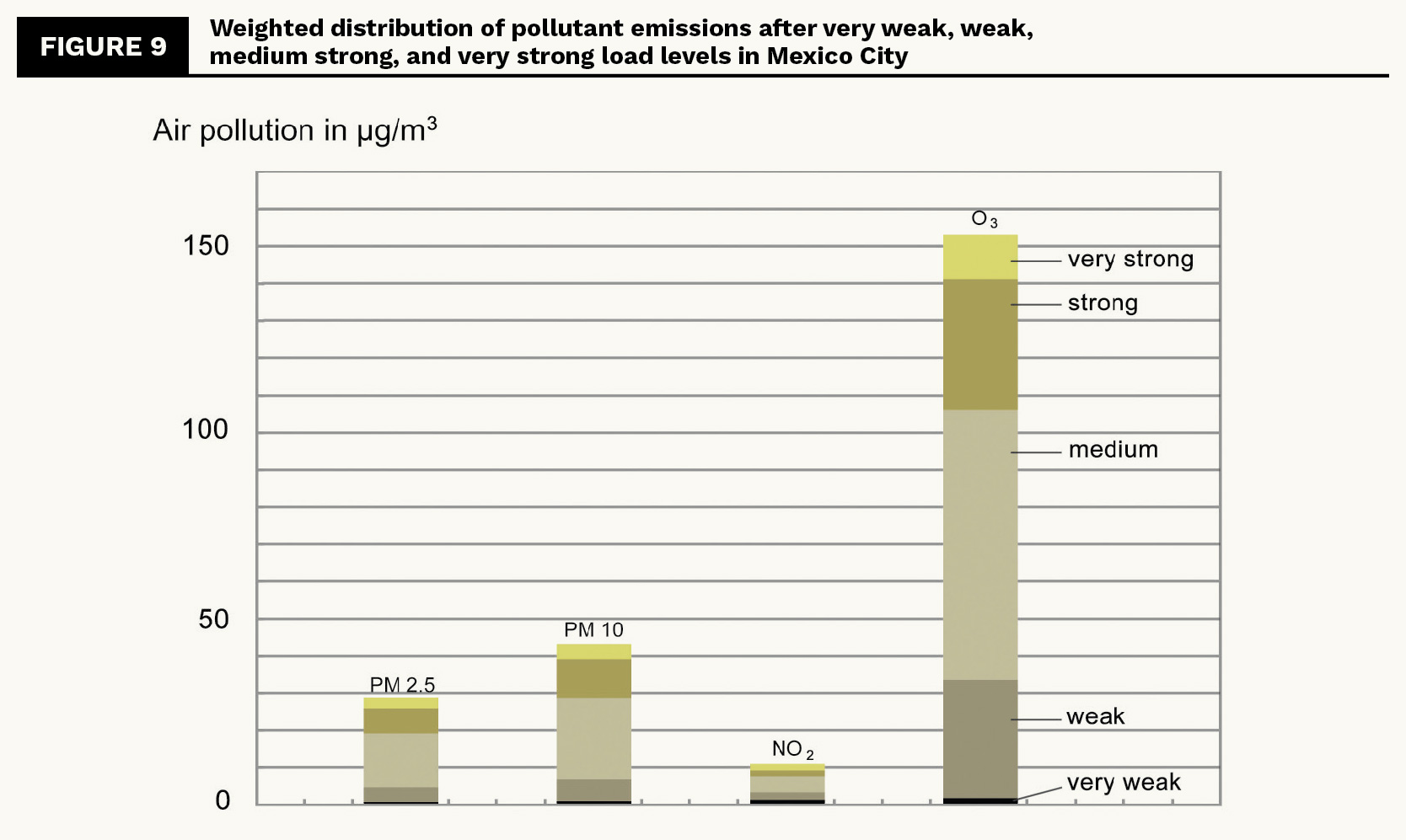
The same tabular and graphical representation is used for the cities of New York and Hamburg (see figures 10 and 11).
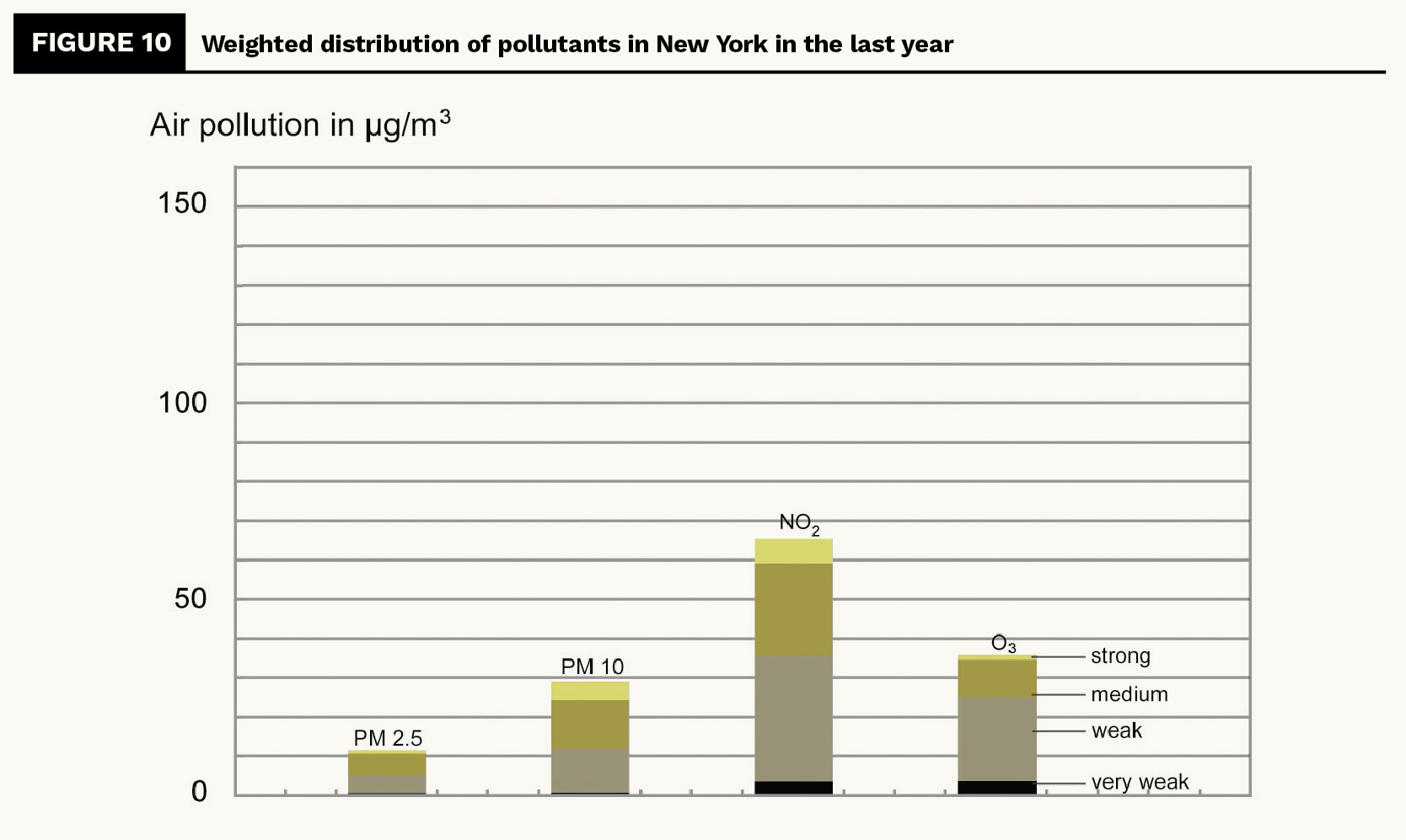
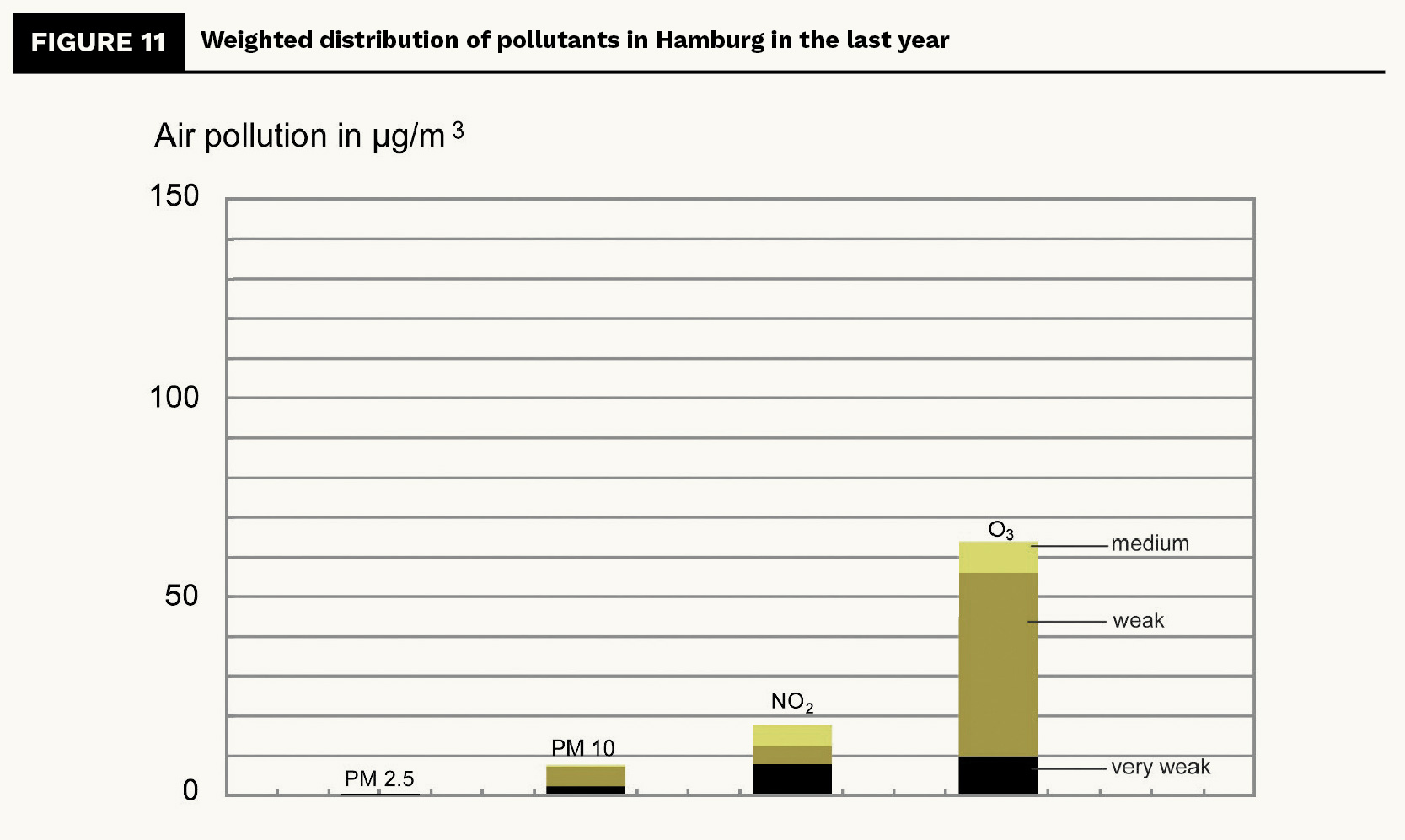
Figure 12 shows the comparison of the annual air pollution with PM2.5 in the three cities examined.
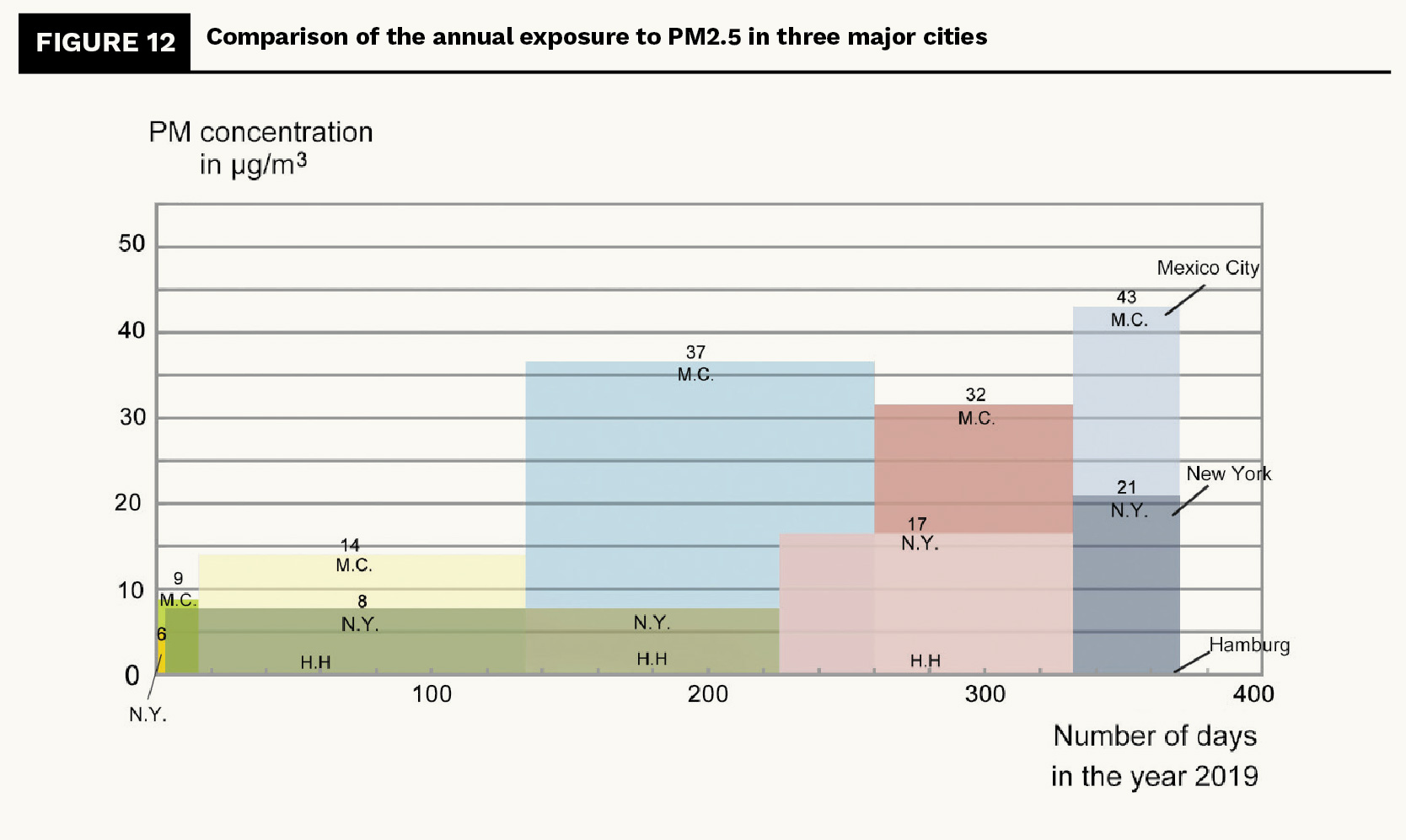
What is particularly worrying is the fact that the number of days with very high concentrations in Mexico City is extremely high. The average is 26 days with 48 µg/m3. The WHO annual mean limit is 10 µg/m3, that of the EU 25 µg/m3. A limit of 20 µg/m3 will apply from 2020. The EU limit of 25 µg/m3 has been criticised for years as being too high.
Innovation Demand in Heavy Motor Vehicles
From the point of view of the spreading of virus, air pollution, primarily through ultrafine soot particles and NOx, needs to be intensively reduced in big cities. Otherwise, the greatest efforts to contain the future infections or pandemic will either be ineffective or will work for only a limited time. Diseases could come back with enormous strength.
Electric driving systems not only help the environment but also protect people’s health against infection in densely populated cities. Heavy-duty vehicles in particular, such as buses, trucks and off-road vehicles, should use more modern electric propulsion systems, alternative fuels such as bio and synthetic fuels, hydrogen, and hydrogen derivates.
Other additional measures, such as the construction of traffic-protected districts and green areas, especially in the centres of cities, are of importance.
Summary
Commercial vehicles are motor vehicles intended for the commercial transport of goods and passengers, with light commercial vehicles often referring to vehicles under 3.5 tons. Heavy commercial vehicles are essential for the delivery of goods and people. Pollutants in cities come mainly from traffic with heavy-duty vehicles and off-road engines.
In 2022, worldwide commercial vehicle production grew to around 23.7 million units, continuing the slow recovery from a decline of 3 million units recorded in 2020. With around 13.3 million vehicles produced, North America was the leading region in the production of commercial vehicles in 202216.
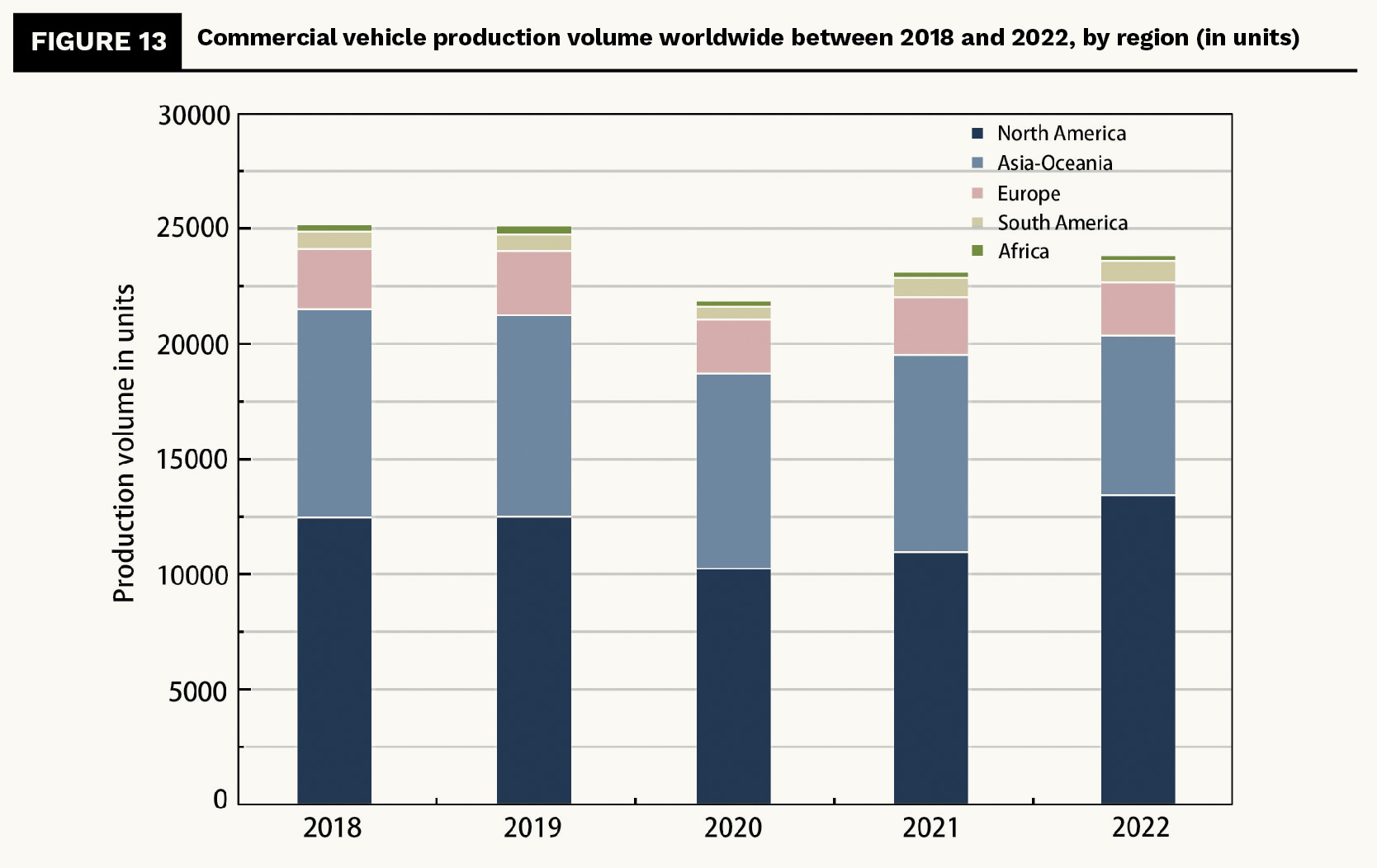
Outlook
Even though electric drive systems are gaining in importance, heavy commercial vehicles and off-road machines will still be powered by the internal combustion engine in the foreseeable future. It will be necessary to improve electric drive systems and motor and exhaust gas after-treatment technology.
Acknowledgement
This work was supported by the National Natural Science Foundation of China (42077111, 72261147460), the High-end Foreign Expert Introduction Program of China (G2022037007L), the Technology Innovation and Development Project of the Inner Mongolia Institute of Shanghai Jiao Tong University (2021PT0045-02-01), the Jinan City Talent Development Project in 2021 (2021GXRC067), the Organisation Department of Sichuan Provincial Party Committee and the Department of Human Resources and Social Security of Sichuan Provincial.
About the Authors
 Dr Lou Ziyang is a professor at the Shanghai Engineering Research Centre of Solid Waste Treatment and Resource Recovery, School of Environmental Science and Engineering. He is a member of the China-UK Low Carbon College, Shanghai Jiao Tong University and director of the Shanghai Institute of Pollution Control and Ecological Security Shanghai and of the China Institute for Urban Governance in Shanghai and of the Research Institute in Sichuan, Shanghai Jiao Tong University.
Dr Lou Ziyang is a professor at the Shanghai Engineering Research Centre of Solid Waste Treatment and Resource Recovery, School of Environmental Science and Engineering. He is a member of the China-UK Low Carbon College, Shanghai Jiao Tong University and director of the Shanghai Institute of Pollution Control and Ecological Security Shanghai and of the China Institute for Urban Governance in Shanghai and of the Research Institute in Sichuan, Shanghai Jiao Tong University.
 Michael Palocz-Andresen is a guest-professor at BUAP Benemérita Universidad Autónoma de Puebla. From 2018 to 2021 he worked as a Herder-professor supported by the DAAD at the TEC de Monterrey in Mexico. He became a full professor at the University West Hungary 2005-17. He is currently a guest professor at the TU Budapest, the Leuphana University Lüneburg, and at the Shanghai Jiao Tong University. He is a Humboldt scientist and instructor of the SAE International in the USA.
Michael Palocz-Andresen is a guest-professor at BUAP Benemérita Universidad Autónoma de Puebla. From 2018 to 2021 he worked as a Herder-professor supported by the DAAD at the TEC de Monterrey in Mexico. He became a full professor at the University West Hungary 2005-17. He is currently a guest professor at the TU Budapest, the Leuphana University Lüneburg, and at the Shanghai Jiao Tong University. He is a Humboldt scientist and instructor of the SAE International in the USA.
References
[1] https://www.tecnosida.com/ultra-fine-dust-origin-and-effects-on-health-and-environment
[2] Dobkin, J., Diaz, C.: “Coronavirus Statistics: Tracking The Epidemic In New York”. 7 April 2020 12:45 p.m. https://gothamist.com/news/coronavirus-statistics-tracking-epidemic-new-york
[3] Andresen, L.: “Statistische Datensammlung zur Corona Pandemie”. March-April 2020. 7 April 2020.
[4] COVID-19 Coronavirus Pandemic. https://www.worldometers.info/coronavirus/
[5] Coronavirus Hamburg, Germany. https://www.ovulation-calculators.com/coronavirus/de/hamburg/
[6] “Coronavirus (COVID-19) confirmed cases in Russia as of 10 April 2020, by region”.
https://www.statista.com/statistics/1102935/coronavirus-cases-by-region-in-russia/
[7] “Number of deaths related to coronavirus (COVID-19) in Spain as of 9 April 2020, by autonomous community”. https://www.google.com/search?client=firefox-b-d&q=corona+madrid+statistics
[8] “4446 Coronavirus-Infizierte bestätigt Zahl der COVID-19-Toten in Berlin in einer Woche mehr als verdoppelt”. https://www.tagesspiegel.de/berlin/4446-coronavirus-infizierte-bestaetigt-zahl-der-COVID-19-toten-in-berlin-in-einer-woche-mehr-als-verdoppelt/25655678.html
[9] “NO2-Belastung sinkt trotz ungünstiger Wetterbedingungen messbar. Behörde für Umwelt und Energie Hamburg”. 21 April 2020. ttps://www.hamburg.de/pressearchiv-fhh/13868008/2020-04-21-bue-luftqualitaet/
[10] “Air quality during COVID-19”. Department of Health NYC. http://a816-dohbesp.nyc.gov/IndicatorPublic/Closerlook/COVIDair/
[11] POSITION PAPER. “Relazione circa l’effetto dell’inquinamento da particolato atmosferico e la diffusione di virus nella popolazione”. http://www.simaonlus.it/wpsima/wp-content/uploads/2020/03/COVID19_Position-Paper_Relazione-circa-l%E2%80%99effetto-dell%E2%80%99inquinamento-da-particolato-atmosferico-e-la-diffusione-di-virus-nella-popolazione.pdf
[12] “Feinstaub und Gesundheit. Eine Initiative des Gesundheitsreferenten des Landes Kärnten”. Klagenfurt, January 2008. http://www.wolfsberg.at/srv/img.ashx?id=1102709426
[13] Rivera, B. H., Rodriguez, M.G.: “Characterization of Airborne Particles Collected from Car Engine Air Filters Using SEM and EDX Techniques”. International Journal of Environmental Research and Public Health. 1 October 2016.
[14] Mehel, A., Murzym, F.: “Effect of air velocity on nanoparticles dispersion in the wake of a vehicle model: Wind tunnel experiments”. Atmospheric Pollution Research, Volume 6, Issue 4, July 2015, pp. 612-17
[15] Coronavirus. https://en.wikipedia.org/wiki/Coronavirus
[16] Kitzler, Ch.: “Smog in Mailand. Italien riskiert hohe EU-Strafe wegen Luftqualität”. https://www.deutschlandfunk.de/smog-in-mailand-italien-riskiert-hohe-eu-strafe-wegen.1773.de.html?dram:article_id=379115
[17] https://www.statista.com/statistics/725818/truck-production-value-mexico/



